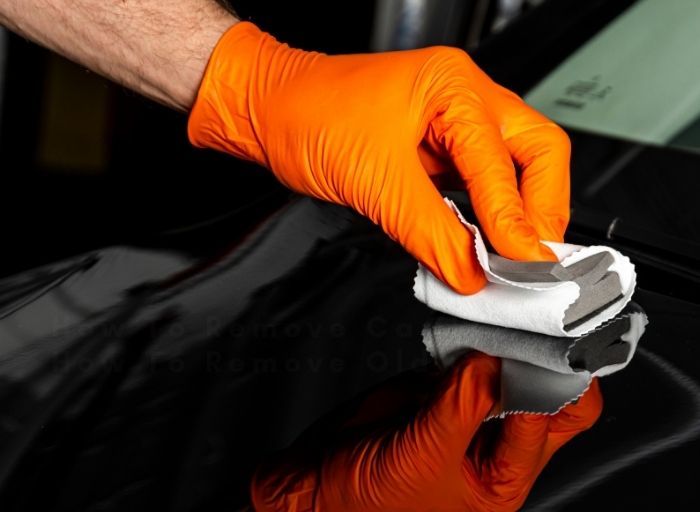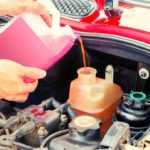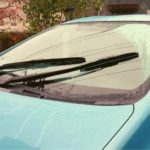
If you’ve noticed that your car is looking a little dull, and you want it to be shinier and wetter than ever before, then we’ve got a guide for you.
It doesn’t matter whether your car is old or new, no matter what type of manufacturer it is, and no matter how many miles per gallon; there are a few steps to removing car wax with clay bars. If you have a brand-new car, most likely there is a layer of protective wax. This layer is important for keeping your car shining and wet with a sleek finish.
But with time, this layer of protection starts to fade and lose its luster. So, how to remove car wax? In fact, it can even begin to attract rust or mold. That’s when it’s time to remove the wax from your car using the proper technique.
Table of Contents
What Is Car Wax and How Does It Work?
Car wax is a protective coating applied to the exterior surface of a car’s paintwork. It is designed to enhance the vehicle’s appearance and provide protection against various elements.
Car wax is typically made from natural or synthetic ingredients such as carnauba wax, beeswax, polymers, and silicones. These ingredients are blended to create a smooth and viscous substance that easily spreads onto the car’s surface.
When applied to the paintwork, car wax forms a thin layer that bonds with the surface. This layer is a barrier, protecting the paint from environmental contaminants such as dirt, dust, UV rays, and moisture. It also helps to prevent the paint’s oxidation and fading, keeping it glossy and vibrant.
The wax creates a hydrophobic effect, meaning that it repels water. This helps to reduce water spots and makes it easier to clean the car, as dirt and grime are less likely to stick to the surface. Additionally, the smoothness of the waxed surface reduces friction, allowing water to slide off more easily during rain or when washing the car.
Car wax also provides a certain level of protection against minor scratches and swirl marks. The wax layer acts as a sacrificial barrier, absorbing the impact and minimizing the damage to the underlying paint.
Signs that Car Wax Needs to be Removed
There are several signs that indicate car wax needs to be removed and reapplied. Here are some common signs to look out for:
Loss of shine
Over time, car wax can lose its luster and shine. If your car’s paintwork appears dull or lacks the glossy finish it once had, it may be a sign that the wax has deteriorated and needs to be removed.
Water doesn’t bead

One of the primary benefits of car wax is its hydrophobic properties, which cause water to bead up and roll off the surface. If you observe that water no longer forms beads and instead spreads or forms flat spots on the paint, the wax is no longer effective and needs to be refreshed.
Difficulty in cleaning
Car wax helps to repel dirt, making it easier to clean your vehicle. If your car is becoming increasingly difficult to clean, with dirt and grime sticking to the surface more stubbornly, it may be a sign that the wax layer has worn off.
Lack of protection
Car wax acts as a protective barrier against environmental contaminants and minor scratches. Suppose your car’s paintwork is becoming susceptible to scratches, fading, or oxidation. In that case, it suggests that the wax no longer provides sufficient protection and should be removed and reapplied.
Rough or uneven texture
Wax can become rough or develop an uneven texture as it ages and deteriorates. If you run your hand over the paintwork and feel roughness or inconsistencies, it indicates that the wax layer needs to be removed to restore a smooth and even surface.
Reduced water-repellent properties
When the wax layer is no longer effective, you may notice that water no longer beads up and rolls off the surface as easily as before. Instead, the water may form larger droplets or sheets on the paintwork. This suggests that the wax needs to be removed and reapplied to restore its water-repellent properties.
If you observe any of these signs, removing the existing wax layer using a wax remover or a gentle automotive detailing clay is recommended. This will prepare the surface for a fresh application of car wax, ensuring optimal protection and a renewed shine.
How To Remove Car Wax
Tools and Materials Needed for Car Wax Removal
- Car wax remover
- Microfiber towels: Use them for wiping off the wax remover and any residual wax from the surface. Ensure you have enough clean towels available for the job.
- Soft detailing brushes: Use soft detailing brushes to reach into crevices and tight areas where wax residue may be present.
- Automotive detailing clay: If the wax residue is particularly stubborn or embedded, you may need a clay bar or clay mitt to remove it. The clay safely lifts contaminants and leftover wax from the paint surface.
- Water and soap: Prepare a bucket of soapy water using mild automotive soap.
- Hose or pressure washer
- Plastic razor blade (optional): In some cases, wax residue can accumulate in tight areas such as trim or emblems. A plastic razor blade can be used very carefully to gently scrape off the wax without damaging the surface.
How To Remove Car Wax: Step-by-Step Guide
Step 1: Preparing the Car
Start by washing the car using a mild automotive soap and a sponge or microfiber wash mitt. Clean all exterior surfaces, including the body, windows, wheels, and trim. Rinse off any loose dirt and grime before proceeding.
After washing, dry the car thoroughly with a microfiber towel or a drying cloth. Ensure that no water droplets or moisture remain on the surface, as this can interfere with the wax removal process.
Step 2: Using Detailing Clay
Knead a small piece of detailing clay in your hands to soften it.
Then, spray a clay lubricant or a mixture of water and automotive soap onto a small section of the car’s surface.
Gently glide the clay over the lubricated area using light pressure. The clay will pick up any contaminants or leftover wax residue on the paintwork.
Continue this process, working in small sections, until you have clayed the entire car.
Step 3: Applying Pre-wax Cleaner
Select a suitable pre-wax cleaner that is designed to remove wax, oils, and any remaining contaminants from the paint surface.
Then, apply the pre-wax cleaner onto a clean, lint-free microfiber towel or applicator pad. Spread it onto the car’s surface in a thin, even layer.
Work on one section at a time, applying gentle pressure.
Let the cleaner sit on the surface for the recommended time specified by the manufacturer.
Note: Avoid applying the cleaner to hot surfaces or in direct sunlight, as it may cause the product to dry too quickly.
Step 4: Removing Wax from Trim and Crevices
To prevent the pre-wax cleaner or wax remover from staining or damaging trim pieces or plastic parts, applying a layer of masking tape or using a specialized trim protector product is recommended. This will create a barrier and protect these areas during the wax removal.
After that, use a clean microfiber towel or a soft detailing brush to gently wipe and remove the pre-wax cleaner, paying extra attention to trim pieces and crevices.
Repeat the process as needed to ensure all wax residue is removed. Inspect the areas carefully to ensure thorough removal.
Step 5: Polishing (if necessary)
If the car’s paintwork requires further enhancement or restoration, you may consider polishing it after the wax removal process.
Polishing can help to remove minor imperfections, swirl marks, or oxidation and restore a smooth and glossy finish.
Check out this video for more ideas!
How To Remove Car Wax From Plastic (Also Plastic Trim)
How to remove car wax from the plastic can sometimes be tricky, especially if you are trying to remove the wax from the painted plastic. Since you are dealing with a plastic material, it’s important to take some precautions when removing the wax from areas such as headlights or mirrors.
First, you want to ensure your vehicle is completely clean before beginning this process.
Once the surface is clean and dry, take some lubricant and rub it onto the area in which you would like to apply clay. The lubricant can come in the form of soap or X-wax spray.
Once you have applied the lubricant, it’s time to rub the clay bar into the plastic and remove the excess wax.
Make sure to apply moderate pressure when rubbing, and be sure that you don’t use too much pressure, or else you risk damaging the surface.
How To Remove Dried Car Wax
When you are trying to remove dried car wax from your vehicle, it’s important to use a clay bar. Doing so will help with the removal process.
To begin, apply lubricant onto the car’s surface you will be working with. Once this is done, rub some soap or X-wax spray onto the area where you want to apply the clay bar. This process will help loosen any dried residue on your vehicle before attempting to remove car wax with clay.
Once the lubricant is applied, take a three-inch by three-inch piece of the clay bar and roll it into a ball.
Once you have rolled the clay bar into a ball, it’s time to go to work.
Start wrapping the clay bar around your lubricated surface in small circles. Ensure you apply pressure as you move the car wax remover.
Check out this video for more detail!
How To Remove Car Wax From Windshield
Windshields are a popular place to apply wax. Once you have finished applying your wax or protectant, make sure you brush it off before proceeding to the next step. This will help prevent you from having any of the residue left behind.
After the windshield has been brushed and dried, grab a new piece of the clay bar and rub it onto your car’s surface.
This will help to remove car wax from your car. As you rub the clay, apply even pressure all across the surface of your vehicle.
FAQs
How to remove car wax residue?
The best way to remove car wax residue from your windshield is to use a clay bar. This process can be tricky if you have never used a clay bar on your windshield.
How to get car wax out of clothes?
The best thing you can do to remove car wax from clothes is to wash the item in cold water. After you have washed it, rewash it with warm water to remove any residue that has built up.
How to get car wax off windows?
The best thing you can do to remove car wax from your windows is to use an oil-based cleanser. You can get these cleaners at any auto parts store.
How to remove car wax from fabric?
The best way to remove car wax from your fabric is to steam it right before washing it. Ensure that the steam is set at a high temperature, making the process easier.
Do I need to remove old car wax?
How long your car wax has been on your car is usually irrelevant. If you plan to get professional detail, you will most likely have old car wax taken off during the process. The only reason why it’s wise to remove old car wax is so that you can replace it with new wax.
Does washing up liquid remove car wax? How to remove antifreeze from cars?
Yes, you can use washing-up liquid to remove antifreeze and car wax. However, it is very important that you mix the washing-up liquid with water before applying it to the car.
Can I remove car wax by washing the car?
Washing the car alone may not effectively remove car wax. Car wax is designed to withstand water and requires specific products and techniques for proper removal.
Is it necessary to use a pre-wax cleaner?
While not absolutely necessary, using a pre-wax cleaner can help remove stubborn wax residue, oils, and contaminants, ensuring a clean surface for the new wax to adhere to and maximizing its effectiveness.
Can I remove car wax using household products?
Household products may not be the most effective for removing car wax. It is recommended to use specialized automotive products designed specifically for wax removal to ensure safe and efficient results.
Should I clay the car after removing wax?
It is beneficial to clay the car after removing wax as detailing clay can effectively remove embedded contaminants and leave the surface smooth and prepared for the application of a new layer of wax.
Can I use a power buffer to remove wax?
Using a power buffer for wax removal is not recommended unless you have experience and knowledge in handling the equipment properly. Power buffers can potentially cause damage to the paint if not used correctly.
Do I need to polish the car after removing wax?
Polishing the car after wax removal is not always necessary. It depends on the paint’s condition and the desired enhancement level. If the paint requires further correction or restoration, polishing can be considered.
How long does the car wax removal process take?
The car wax removal process can vary in duration depending on factors such as the vehicle’s size, the wax’s condition, and the techniques used. Generally, it can take a few hours to properly remove the old wax, clean the surface, and prepare it for a fresh wax application.
Wrap Up
Proper car wax removal is essential for maintaining the appearance of your vehicle and preserving its aesthetic appeal. Removing old or deteriorated wax layers allows you to start afresh and apply a new coat of wax effectively.
Further Reading:
Hi everyone, My name is Ollie Barker.
As a seasoned auto expert I have 25 years of experience working in repair and detailing shops. I love to share my tips & tricks to all car lovers, so that’s why I’m here at Automotive Gearz publishing my content, sharing my passion. Also, I’ve been giving my recommendations on which products are the best to have on the market. I always thought it was hard to pick the right part, so hopefully I can make that a bit easier for you.
Hope you enjoy your time on my little blog!







